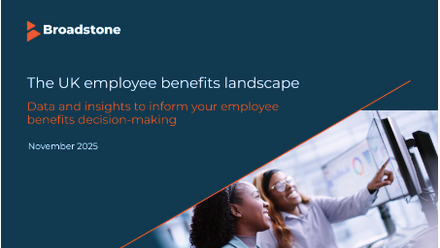Why 2022 is the year of wellbeing benefits – and health insurance in particular

In the UK, there were almost one million mental health referrals since the first lockdown in 2020, due to post-pandemic stress among the under-40s alone, according to newspaper reports.
In January 2021, Engage for Success and Benefex published their Covid-19 Recovery and Employee Mental Health Report on how employers should prepare for supporting employee wellbeing in the long-term, after the pandemic has subsided. As we approach the start of a third year living with the pandemic, we’re seeing a much clearer picture of the impact this crisis will have on employees – and the long-term measures employers must start to make.
Preparing for the end of the pandemic
While the pandemic has peaked and dipped multiple times, we are still far from its true end. Employees still face uncertainty. In the height of the pandemic, this rolling news cycle of negativity, lockdowns, isolation, unemployment, unreliable information and the removal of familiar coping mechanisms meant almost every employer reported higher cases of poor mental health among their employees. Today, according to a US survey by NBC Boston, more than 60% of employees say they feel “worn out” by the pandemic, as we struggle to deal with the long bouts of stress our bodies aren’t designed to endure.
The pandemic is also affecting employee wellbeing in many unexpected ways, as it caused a spike in relationship break-ups and divorce, increased alcohol misuse, worsened sleep patterns, more A&E visits and even an increase in spiritual crises. As we look to the end of the pandemic, employers need to start to consider what they need to do next – and be prepared to enact these plans, when this moment comes.
In December, The New York Times asked almost 1,500 mental health professionals how their patients were coping. Nine out of ten reported an increase in the number of people asking for help, and 75% say there has been an increase in waiting times to access private mental health support with one saying, “I’ve never seen it like this before, where everybody is full, and anybody that I know has a waiting list”.
In the UK, NHS mental health services also remain under great strain, with an reported 1.6m people on waiting lists between six weeks and four months, according to the NHS (with even longer waiting times for specialist treatment or inpatient support).
Despite this seemingly bleak outlook, The New York Times survey also highlighted optimism when looking to telemedicine. More than half of those surveyed say telemedicine has made their jobs easier and boosted accessibility to support, highlighting one big way employers can better support their people – through the benefits on offer.
The role of employee benefits in post-pandemic mental health recovery
As well as the obvious positives to employers offering employees telemedicine benefits, it also has the potential to drive down premiums for employers. Data from Aetna International shows that the more employees use telemedicine services, the bigger the reduction in claims, due to around 75% resolving their condition without the need for onward care or expensive hospital visits. Over 90% of respondents said they would have gone to hospital if a remote consultation wasn’t available. As the pandemic subsides, telemedicine and its success may have long-term benefits for both employers and employees.
The latest data suggests that as well as interest in new benefits, the pandemic fuelled a large uptake in the engagement with traditional protection-related employee benefits. The impact has also created a significant change in profiling for benefits like life and health insurance in the UK.
Studies examining factors associated with anxiety and depression during the pandemic have highlighted what conditions contribute to higher rates of poor mental health. Aside from the well-established risk factors such as being unemployed, socioeconomic and age factors, there are several other factors employers should know: a study by the Journal of Community Psychology found rates of pandemic-related mental health issues were higher in those worried about finances and those who don’t have health insurance.
Health insurance is another example of a benefit that has gained appeal to new demographics, as the market has gathered significant traction during the pandemic. Before 2019, only 13% of Brits had private medical insurance. Today, an increase in people taking out new policies since the start of the pandemic has resulted in the average age of policyholders falling from 40 to 33, a significant move in the type of employees who value this benefit.
The pandemic has also driven a surge in UK adults seeking out life insurance. According to a report in the Financial Times, almost 6 million people in the UK considered buying life insurance last year, a large percentage of these under 34. That’s more than 10% of the population looking for easy to access and easy to understand life insurance.
The future of employee benefits is wellbeing
A survey of 4,000 adults in 2021 showed more than one-fifth had paid for private medical treatment because they couldn’t get the treatment they needed on the NHS. One-quarter said the reason for going private was the serious impact on their mental health while waiting for treatment. It’s estimated that, in the UK, we’re now spending more than £1bn every year on self-pay medical treatment. With the most optimistic scenarios seeing NHS waiting times not returning to pre-pandemic levels until 2024, employees will continue to face difficult wellbeing decisions over the coming years – choosing between physical and financial wellbeing: fall into debt, erode their financial resilience, or wait months, even years for treatment.
There is an obvious role for employers to help their people through employee benefits’ ability to fund some of this much-needed support. While many benefit schemes will offer protection products like life insurance, ensuring your scheme offers telemedicine, financial wellbeing support and health insurance options will not only ensure you are taking a long-term proactive approach to employee wellbeing, you are also protecting your business from future cost increases and your people’s financial resilience.
Author is Gethin Nadin, director, employee wellbeing, Benefex
This article is supplied by Benefex
Supplied by REBA Associate Member, Benifex
The home of award-winning employee benefits, reward, recognition, & communications.







